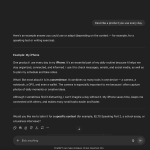Look, real estate is messy. There’s tons of info thrown at buyers, and most of it just makes things harder to figure out. People get stuck, confused, or straight-up lost.
If you want to help buyers actually make sense of things, you need to give them content that’s clear, honest, and actually useful. But why?
Let’s talk about why content is so important in real estate and how it can actually help buyers get smarter and more in control.
Types of Effective Real Estate Content
Here are the types of effective real estate content.
Educational Blog Posts
People come with questions like “How much should I save for a down payment?” or “What’s the difference between pre-approval and pre-qualification?” Educational blog posts answer these clearly. They break down complicated topics like mortgages, inspections, and closing costs in simple terms. When you provide clear guides, buyers feel more confident and less overwhelmed.
Plus, these posts help you show you know your stuff without sounding salesy. It’s about giving useful info that buyers can trust and come back to again and again.
Video Walkthroughs and Neighborhood Tours
Seeing a property or neighborhood in person matters, but videos are the next best thing. Walkthrough videos show the space, layout, and details that photos can’t capture, says Bryan Dornan, Mortgage Lending Expert & Founder at RefiGuide.org.
Neighborhood tours give a feel for the community — schools, parks, shops, and vibe. These videos help buyers imagine living there and build an emotional connection. Plus, videos are easy to watch on phones or social media, making it simple for buyers to get a real sense of a place without scheduling a visit.
Interactive Tools and Calculators
Buyers love tools that let them play with numbers and scenarios. Mortgage calculators, affordability checkers, and budget planners take the mystery out of finances. These interactive tools give instant, personalized answers that help buyers figure out what fits their budget or what their payments might look like.
Offering these tools on your site not only educates but also keeps visitors engaged longer.
Market Reports and Trends
Nothing beats up-to-date data when it comes to understanding the market. Sharing regular reports about local home prices, sales trends, and inventory gives buyers a real edge.
When they see what’s happening in their area, they can better judge when and where to act. This content positions you as a trusted expert who knows the market inside and out. It also helps buyers avoid surprises and make decisions based on facts, not just guesses or rumors.
Case Studies and Buyer Stories
Kim Lee, Realtor of Kim Lee Real Estate explains, “Real stories from real people go a long way. Sharing buyer journeys — what challenges they faced, how they found solutions, and what they learned — makes the process relatable. These stories build trust because buyers see they’re not alone in facing tough decisions.
Case studies also show how your expertise helped people avoid pitfalls or find great deals. When buyers see proof you deliver results, it makes them more comfortable reaching out and working with you.”
FAQs and Jargon-Busting Glossaries
Real estate is full of confusing terms like “escrow,” “contingency,” and “amortization.” Putting together a simple FAQ page or glossary helps buyers quickly get what these words mean.
When you explain things in plain English, it lowers barriers and makes buyers feel smarter. This content is super helpful because buyers often Google terms while researching. If they find your easy-to-understand explanations, it keeps them on your site longer and builds trust that you’re clear and upfront.
Checklists and Downloadable Guides
Buyers love having a clear roadmap. Checklists — like “Steps to Buying Your First Home” or “What to Inspect Before Signing” — help organize the process. Downloadable guides give detailed info buyers can save and refer back to anytime. These resources reduce stress and make buyers feel prepared, says Indie Basi, Director of Wade Temporary Fencing.
Offering these free tools also builds goodwill and keeps your brand top of mind. When buyers have these handy references, they’re more likely to take action and come back to you for help.
How Better Content Drives Smarter Buyer Behavior
When buyers have access to clear, honest, and useful content, it changes the way they approach real estate decisions. Instead of feeling lost, they become more confident and focused. Here are five ways better content helps buyers act smarter and make better choices.
Cuts Through Confusion and Overload
Real estate can be full of complicated terms and conflicting advice. Good content breaks things down into simple, clear ideas buyers can actually understand. When buyers aren’t drowning in confusing info, they can focus on what really matters — like which properties fit their needs and budget. This clarity helps them avoid costly mistakes and wasted time chasing the wrong options.
Encourages Deeper Questions
When buyers are educated, they ask better, more specific questions. Instead of vague or generic concerns, they come prepared with targeted questions about financing, inspections, or neighborhood details.
This not only helps buyers get exactly the info they need but also makes conversations with agents or sellers more productive. Better questions lead to smarter decisions.
Builds Realistic Expectations
Clive Gray, from London Review of Suit Tailors says, “Good content helps buyers see what’s truly possible in their market. Instead of chasing unrealistic deals or expecting homes to tick every box, they learn what trade-offs might be necessary. This sets more practical goals and keeps frustration down. Knowing what to expect also helps buyers act faster when the right opportunity comes along.”
Empowers Independent Research
Today’s buyers want to feel in control. When you provide solid content — whether guides, videos, or tools — they can learn and explore at their own pace. This independence means they’re better prepared when it’s time to move forward.
Instead of relying only on agents for every detail, they come ready, making the whole process smoother and faster.
Builds Trust and Long-Term Relationships
When you consistently offer valuable, honest content, buyers start seeing you as a trusted resource — not just someone trying to sell. This trust makes them more comfortable reaching out, sharing concerns, and eventually closing deals. Over time, it turns one-time buyers into repeat clients and referrals, which is gold for any real estate business.
Best Practices for Creating Buyer-Focused Real Estate Content
Creating content that truly helps buyers isn’t just about pushing listings. It’s about understanding what buyers need, how they think, and making their journey easier. Here are some best practices to keep your content buyer-focused and effective:
Keep It Simple and Clear
Buyers aren’t real estate experts — don’t talk like you are. Use everyday language, break down complex ideas into easy chunks, and avoid jargon. Clear, straightforward content helps buyers feel confident instead of confused. When buyers understand what you’re saying without needing a dictionary, they stick around and trust you more.
Be Honest and Transparent
Nobody likes hidden fees, surprises, or sugar-coated info. Always be upfront about challenges, costs, or market realities. Honest content builds trust. If buyers know you’re telling it like it is — even if it’s not all perfect — they’ll respect you more and keep coming back, suggests Dan Close, Founder and CEO of BuyingHomes.com.
Focus on What Buyers Really Care About
It’s easy to get caught up talking about features you want to sell, but the key is what buyers want to know. Address their real questions and pain points: financing, neighborhood safety, schools, commute times, or resale value. Tailor your content around these topics to keep buyers engaged and informed.
Use Stories and Real Examples
Facts and figures are important, but stories stick. Share real buyer experiences, challenges they faced, and how they found solutions. Stories make content relatable and memorable. When buyers see themselves in those stories, they feel more connected and understood.
Make It Easy to Find and Use
Good content won’t help if buyers can’t find it or it’s hard to navigate. Organize your site or platform with clear menus, search options, and easy downloads. Optimize for mobile since many buyers research on their phones. Use headings, bullet points, and visuals to break up text and keep readers engaged.
Update Regularly
Markets change, rules evolve, and buyer needs shift. Keep your content fresh and accurate by updating it regularly. Outdated info can confuse or mislead buyers and hurt your credibility. Schedule regular reviews to add new insights or adjust details as needed.
Include Calls to Action
Don’t just push for a sale. Encourage buyers to take useful steps like downloading a guide, using a calculator, or contacting you with questions. Clear, helpful CTAs guide buyers through their journey without pressure, making them more likely to engage and convert when ready.
Conclusion
Creating effective real estate content requires clarity, honesty, and a focus on the specific needs of buyers. Clear and practical information helps buyers understand complex topics, which reduces confusion and builds confidence.
Organizing content so it is easy to find and regularly updating it with current market information keeps buyers well-informed throughout their journey. By addressing real questions and providing useful tools, you encourage smarter decision-making and stronger trust.
Lynn Martelli is an editor at Readability. She received her MFA in Creative Writing from Antioch University and has worked as an editor for over 10 years. Lynn has edited a wide variety of books, including fiction, non-fiction, memoirs, and more. In her free time, Lynn enjoys reading, writing, and spending time with her family and friends.















